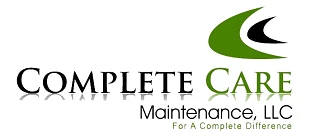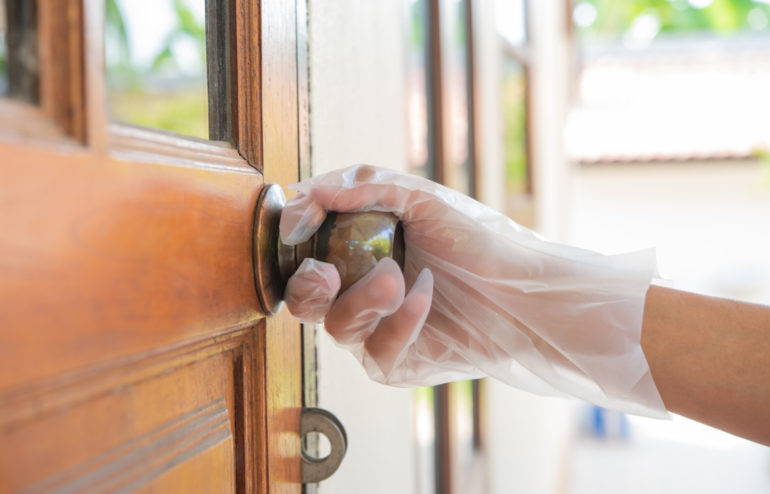Avoid Cross-Contamination When Cleaning

Oftentimes the spread of germs is facilitated by cross-contamination. Cross-contamination is defined as the transfer of bacteria or other microorganisms from one substance to another. Surprisingly, cross-contamination often occurs as a result of cleaning. While this may sound counter-intuitive, poor cleaning practices are a major source of cross-contamination. Professional cleaning companies recognize this fact and put in place procedures and protocols that are designed to mitigate the risk of cross-contamination.
How To Avoid Cross-Contamination When Cleaning
Use Smart Cleaning Processes
Putting cleaning processes in place helps ensure that cleaning duties are performed in a consistent manner. Smart cleaning processes take into consideration the risk of cross-contamination and focus on taking steps to prevent it.
- Always start with a clean pair of gloves and fresh cleaning equipment.
- Clean one area at a time.
- Always clean from top to bottom, wiping down surfaces with an effective cleaning solution.
- Spray disinfectant on all high-touch surfaces like desks, phones, doorknobs and push plates, elevator buttons, counters, railings, and all bathroom surfaces, following manufacturer recommendations for saturation and dwell time.
- Finally, clean the floor starting from an inside corner and working your way toward the exit.
- Place cleaning cloths, mop heads, and other used cleaning tools in a plastic bag and dispose of your gloves when you finish.
- Repeat this process for every area that you clean, never using the same cleaning cloths, mop heads, etc.
Color Code Your Cleaning Supplies
Color-coding cleaning supplies is an excellent way to reduce cross-contamination. For instance, always having ample supplies of cleaning cloths in pre-defined colors can help cleaning crews avoid using the same cloth in two distinctly different areas. A simple color-coding system might look like this:
- Red – Red clothes and equipment marked in red are designated for high-risk areas like toilets and urinals.
- Yellow – Yellow cloths and equipment are designated for medium-risk surfaces like restroom sinks and countertops.
- Green – Green is designated for lower-risk areas such as office areas and non-prep food surfaces.
- Blue – Blue cleaning supplies are reserved for low-risk surfaces like glass and mirrors.
With a color-coded system like this, you can avoid can mitigate cross-contamination and more easily monitor workers to ensure they are following protocols.
Choose The Right Tools
Choosing microfiber over traditional cloths and mop heads is a big step forward in reducing cost-contamination. Traditional cleaning cloths and mop heads are made from absorbent cotton fiber. One study conducted by the University of California Davis Medical Center in collaboration with the EPA that traditional wet loop mops reduced bacteria by 30%, while microfiber mop heads showed a 99% reduction in bacteria.
Microfiber traps bacteria in the fibers of the mop while wet loop mops capture bacteria in the water molecules. Every time a wet loop mop gets dunked in a body of water the bacteria are released, only to be redistributed on the surface being cleaned. Microfiber employs positively charged particles to trap dust particles which is where the bacteria hide. It is a much more effective method for removing bacteria from surfaces.
Like microfiber Hepa filters do a better job of trapping dust particles that harbor germs and bacteria. Traditional vacuums typically employ a cotton or polyester fiber filter that fails to hold the dust as well as the fiberglass and charcoal found in a Hepa filter. Selecting a Hepa filter vacuum will help reduce the risk of cross-contamination.
Segregate Cleaning Staff
Assigning designated staff members to areas throughout your facility is a great way to mitigate cross-contamination. Allowing the same individual to clean the restroom and the kitchen can easily create cross-contamination concerns.
People, whether they realize it or not can collect and carry germs and bacteria on their clothing, shoes, hands, and hair. Limiting cleaning crew staff to designated areas helps to reduce the risk of transmission.
Employ A Commercial Cleaning Company
A well-organized and well-managed commercial cleaning company will already have these protocols and procedures in place. They will be fully versed in the use of proper chemicals and equipment, and they understand how to clean and disinfect virtually any surface.



